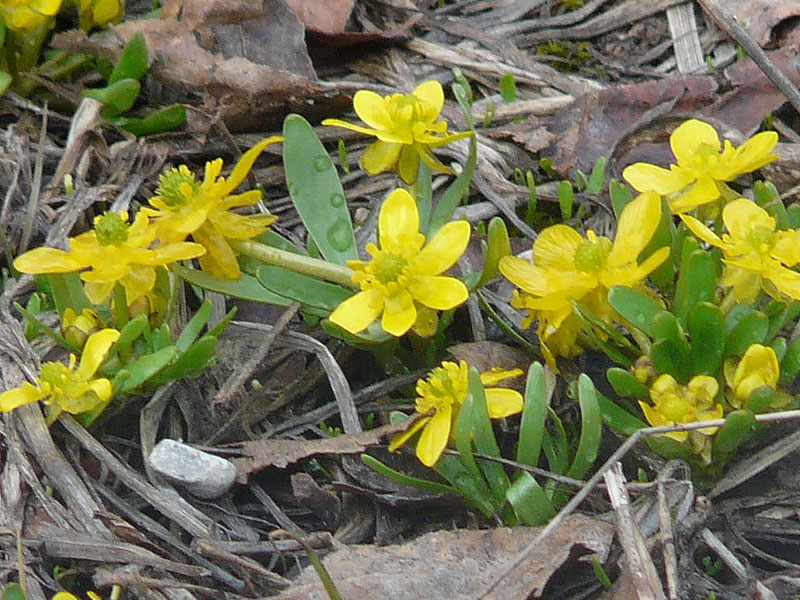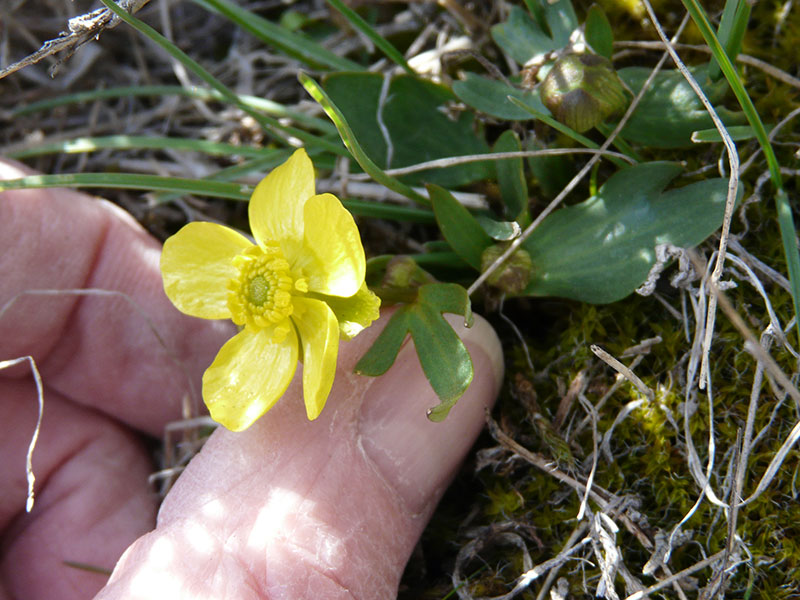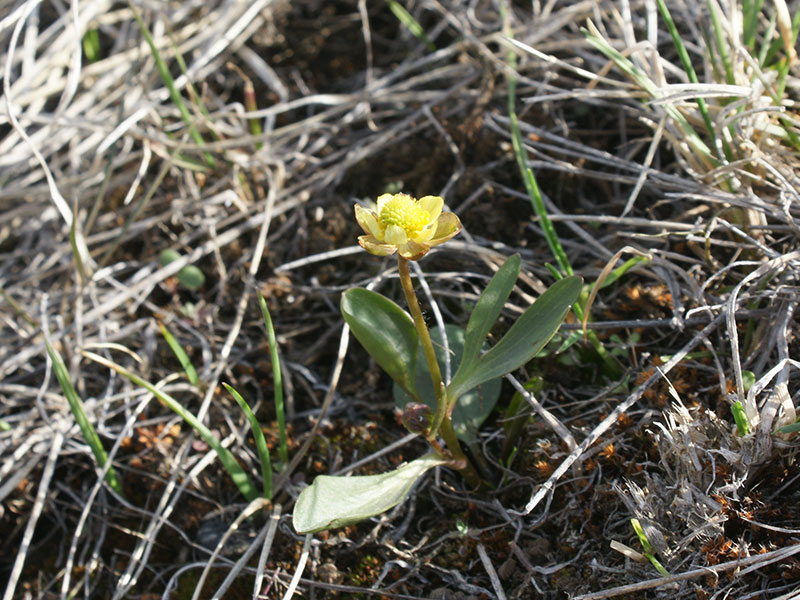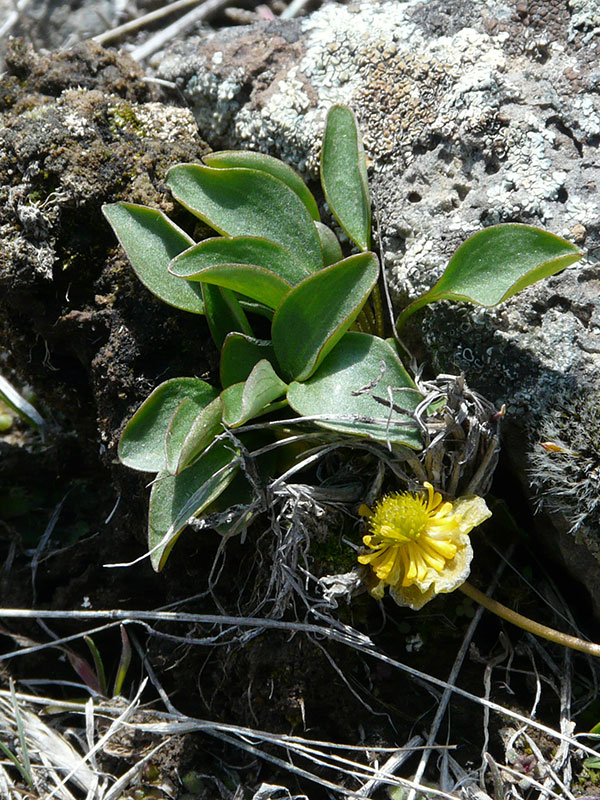Ranunculus glaberrimus / sagebrush buttercup
- one of the earliest spring flowers
- yellow flowers, ca. 1″ across
- usually 5 shiny/waxy petals, numerous stamens
- short, mostly elliptical leaves
- in small to field-sized clumps
- very poisonous
Also known as: elliptical buttercup, early buttercup
The sagebrush buttercup is a short (less than 6″) perennial forb with erect or prostrate stems. With its striking yellow flowers, it is one of the first signs of spring in sagebrush country (in 2020, early April with snow still abounding). It is to be found in moist habitats ranging from sagebrush flats to pine forests and woodland meadows, although it can also be found in the Canyon Creek dry rock beds. The first place I saw it was in a runoff drainage ditch in the Valley, before the water really started running. It generally won’t be found in dense shade.
Sagebrush buttercup flowers normally have 5 (sometimes more) shiny, waxy-looking yellow petals that turn white with age. The number of plants with more than 5 petals appears to increase as the season progresses and air temperature increases. Because petal number is one of the important things for buttercup identification, I think they do that to increase confusion. Each flower has numerous bright yellow stamens. The flowers – about 1/2 to 1″ in diameter, may appear one per stem, or several. The sepals may be tinged with, or distinctly, red. Flip a flower over to see that.
As for the rest of the plant, the leaves of the sagebrush buttercup are mostly basal and on the order of 1″ long. They are broad and rounded or ovate with smooth edges. The Latin name, glaberrimus, means “smoothest”. The leaves are mostly basal at flowering time; the few stem leaves tend to wither early in the season. If you do find them, the stem leaves are more likely to have 2 or 3 lobes but the clefts may be so deep that unless you look carefully they appear to be separate leaves.
Sagebrush buttercup regenerates sexually through seeds and vegetatively through root sprouting and division of mature plants. In the fall, the plants reappear from thick, fleshy roots. New shoots or their buds form but remain dormant under the snow until spring, explaining how you can find these as soon as the snow melts.
NOTE: The sagebrush buttercup is poisonous! Do not put this in your mouth or rub it on your skin. All parts of all buttercups are mildly poisonous when fresh but the toxins can be destroyed by heating or by drying. The plant also has a strongly acrid juice that can cause blistering to the skin. Ingestion causes burning of the mouth, abdominal pain and a whole lot worse. Skin redness, burning sensation, and blisters may follow contact with the sap.
One final note. The flowers of R. glaberrimus are similar to other buttercups, in particular to R. alismifolius with which it can be confused. However, R. alismifolius, or plantainleaf buttercup, has much longer leaves and is generally much taller. Its flowers also (generally) have many (8-10) petals.
Interesting bits – Apparently, the shape of Ranunculus flowers (the whole genus) is such that bees can’t pollinate them very well. Instead, they end up leaving the pollen on the glossy petals from which it washes (by dew or rain) to the stigmas which lie below the stamens.
| Color | |
|---|---|
| Family | |
| Blossom size | |
| Inflorescence size | |
| Inflorescence type | |
| When? | |
| Where? |





